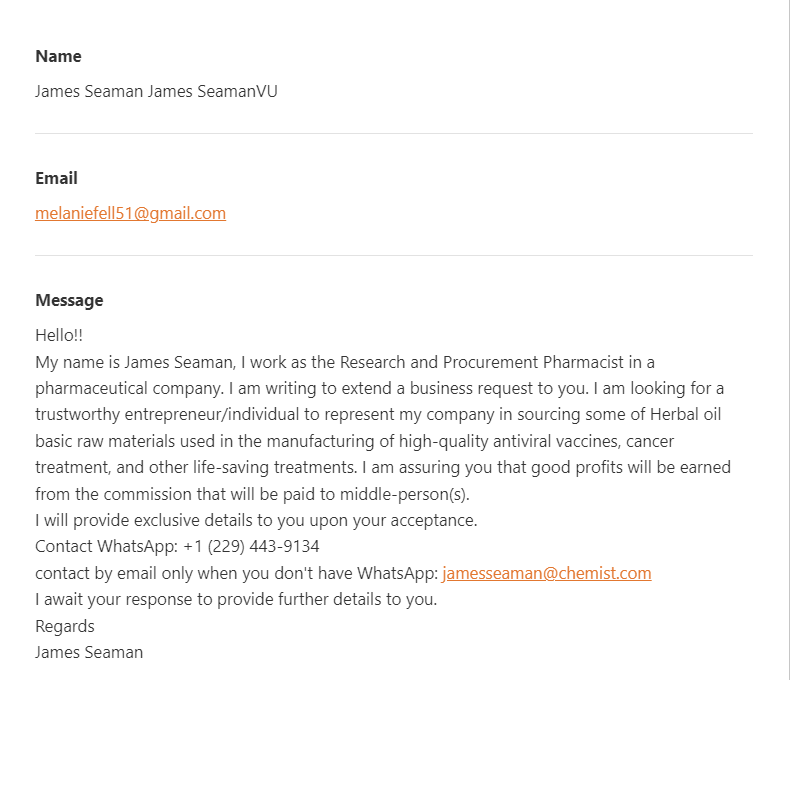🔍 Spot the Scam: A Real-Life Example of Email Fraud
I recently received the following email, which serves as an important reminder for security awareness….
How to tell if this email is legit or a scam:
The email received has several red flags that suggest it might be a scam. Here’s how you can assess and confirm its legitimacy:
1. Sender’s Email Address
- Gmail Address: The email is sent from a personal Gmail account, which is unusual for a professional business proposal. Legitimate business emails typically come from a company domain (e.g., @company.com).
- Secondary Email: The second email provided, jamesseaman@chemist.com, uses a domain that isn’t directly tied to a specific known company, which is another warning sign.
2. Content of the Email
- Too Good to Be True: Promises of high profits and vague descriptions of the business opportunity are common tactics used in scams.
- Lack of Specific Details: The email is very generic and does not provide any specific information about the company, the products, or the business proposal. Legitimate business inquiries usually include detailed information about the company, the project, and expectations.
- Push for Urgency: Scams often push for a quick response without giving you time to think or verify the information.
3. Contact Information
- WhatsApp Contact: Requesting communication through WhatsApp can be a way to bypass email verification and tracking, making it easier for scammers to operate.
- Phone Number: The phone number provided can be looked up online to see if it has been associated with scams.
4. Check the Identity
- Search for the Name: Look up “James Seaman” along with keywords like “scam” or “pharmacist” to see if others have reported similar emails.
- Company Verification: Research the company he claims to represent. If it’s a legitimate business, the company’s website should list the actual contact details, and you can reach out directly to verify if the email is legitimate.
5. Reverse Image Search
- Profile Photos: If the email includes an image of the sender, do a reverse image search to see if the photo is associated with other names or scam reports.
6. Check for Phishing Signs
- Suspicious Links: Hover over any links to see the actual URLs they direct to. If they don’t match the company’s official website, it’s likely a phishing attempt.
- Spelling and Grammar Errors: While this email doesn’t contain obvious errors, many scam emails do, which is a red flag.
7. Verify with Authorities
- Report to Anti-Fraud Agencies: If you’re still unsure, report the email to an anti-fraud agency or your local authorities. They can help you determine if it’s a scam.
Conclusion:
This email is likely a scam. It’s best not to respond or engage further with the sender. If you’re still uncertain, consider reporting it to relevant authorities or consult with a cybersecurity professional.
